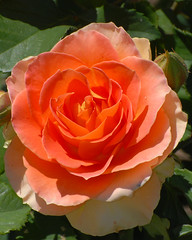Modern Art: Diversity Of Experience And Expression
Modern Art refers to artistic expressions that emerged towards the end of the 19th century, extending to the mid-20th century. It is a broad umbrella term that encompasses various movements and styles, including Impressionism, Surrealism, Cubism, and Abstract Expressionism among others. These forms marked a significant divergence from traditional art styles, revolutionising the aesthetic landscape, resulting in works that projected a wide spectrum of human emotions and experiences.
While Modern Art was initially a phenomenon native to Europe, it quickly permeated other societies and cultures worldwide, leading to a unique commingling of native traditional styles with Western modernist techniques. These pluralistic and layered interactions have been instrumental in producing a highly diverse and vibrant art scene during the period.
A distinctive part of this fabled epoch has been the arresting and thought-provoking works of Australian Aboriginal artefacts. Filled with intricate designs and customary symbolism, these artefacts have been dialogic pieces, encasing their rich traditional legacy within the broader folds of Modern Art.
The indigenous peoples of Australia have a celebrated history of art-making, with their artistic practices dating back over 60,000 years. Traditionally, their artwork was employed as a mode of documented history, a method of conveying knowledge, and a means of imbibing important cultural and spiritual teachings.
As contemporary times hovered over the horizon, there was a visible shift in the form and substance of Aboriginal art. Traditional materials like bark and rock gave way to canvas and acrylic paints—outlining the vivid transformation of these artworks into a style more in tune with Western Modern Art norms.
It is easy to classify Aboriginal creations within the precincts of Modern Art, particularly because of their divergence from realism. Like the key concepts of modernism, Aboriginal art did not seek to replicate an image, but rather to symbolize the essence of a story, emotion or experience.
The dot paintings that have become synonymous with Aboriginal Art encapsulate this abstraction beautifully. In these works, myriad dots combine to form symbolic patterns or ‘Dreamings’ – visual narratives drawn from ancient Aboriginal spiritual beliefs. These storylines echo the cubist works of Picasso or Braque, where a single image is deconstructed into multiple views, suggesting simultaneous, ranged perspectives.
Moreover, the willingness to adopt new materials and techniques, the adaptation to changing social and political landscapes, and the expression of unique individual experiences, are all characteristics that resonate with the ethos of Modern Art. Thus, it becomes clear that these Australian Aboriginal artefacts, with their blend of historical tradition and modernism, form an integral component of the larger narrative of Modern Art.
In conclusion, Modern Art was an era of exploration and experiment, where artists dared to break from set conventions and tread new avenues in their artistic pursuits. From the visually striking designs of Aboriginal Art to the dynamic brushstrokes of European Impressionism, the period was marked by diversity of expression and interpretation, signaling a profound departure from the rigidity of academic art. Ultimately, thus, Modern Art is not just an era or a style of art. It is a testament to the human spirit’s irrepressible urge to innovate, reinterpret, and express anew.


